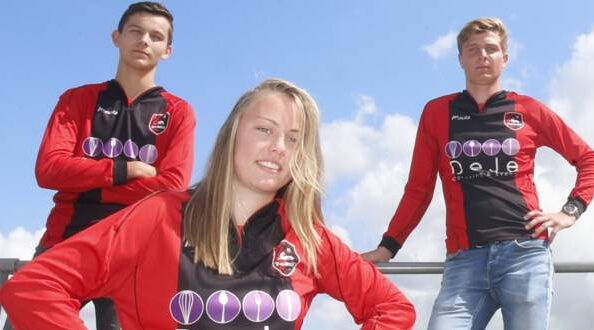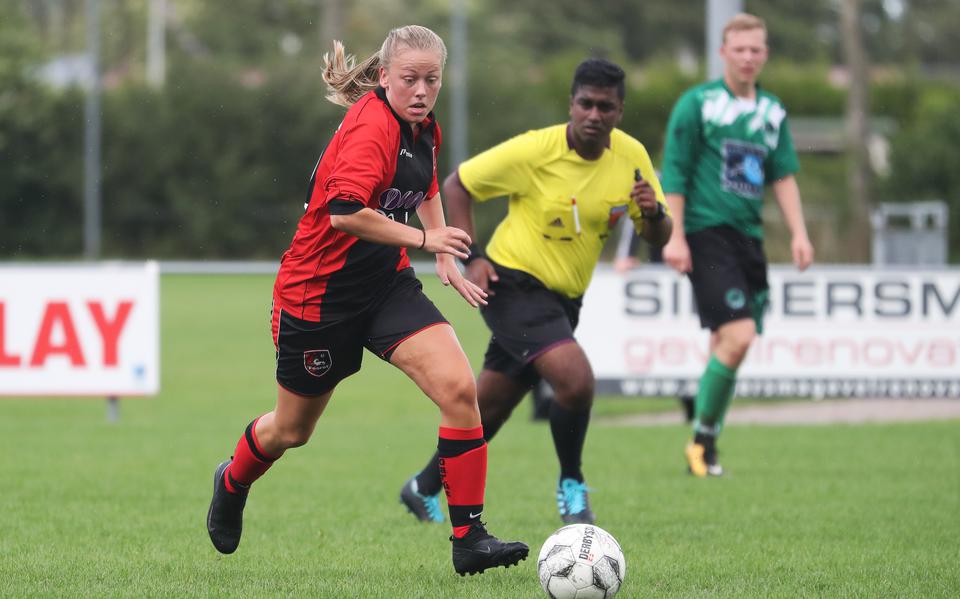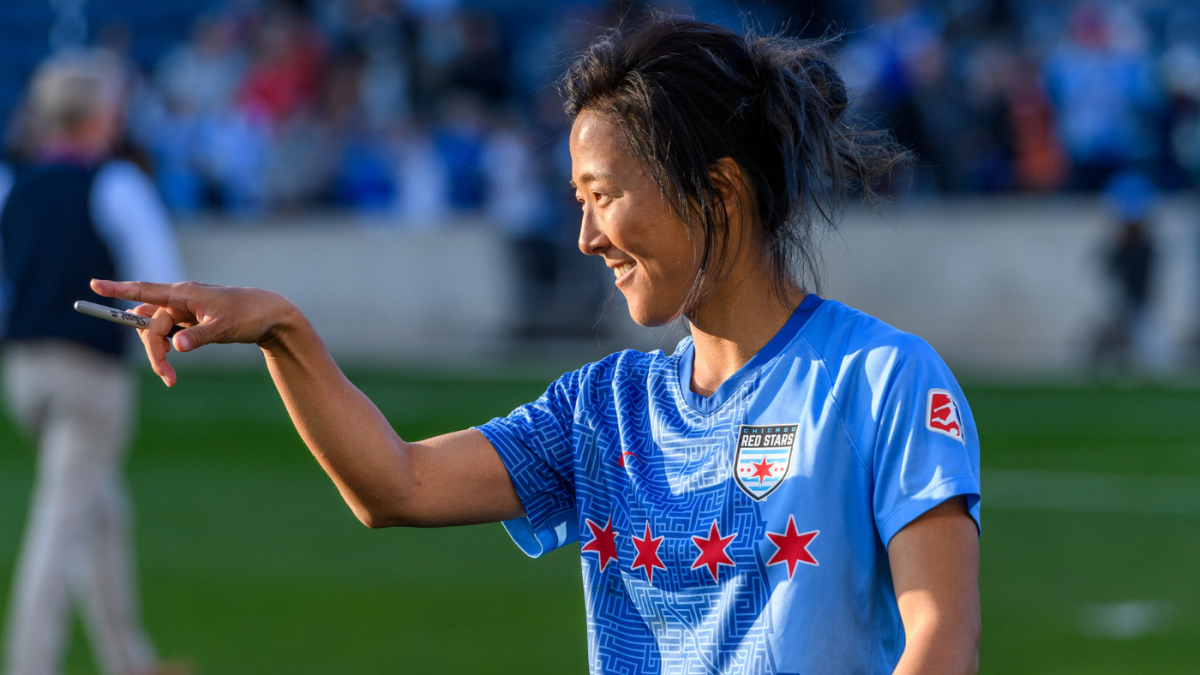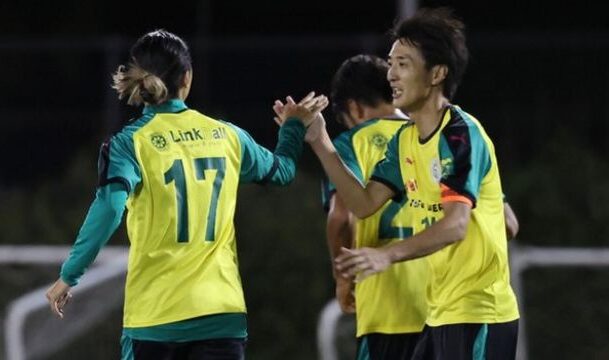Farmer’s daughter Ellen Fokkema and former Chelsea striker Yuki Nagasato both have pulled their boots to make history championships for the big men’s teams in 2020.
But recording their names in football history was not their goal.
For Fokkema, from the Netherlands, it was the next logical step with a group of colleagues she had known since childhood. Of Nagasato overseas, it was just a dream come true.
“Some people have had a negative reaction towards it, but I don’t care. I feel like a lot of people have reacted positively,” Nagasato said.
“And I wish it was normal, and I did. I hope more female players can apply for their men’s team.”
This is the story of two women who broke the mold and changed their minds.
‘They ask how I can play in a men’s team?’
Nagasato spent her early years playing on the boys’ side. Before switching to girls’ football at the age of 12, and wanted to play in the men’s team for years.
“I knew I was good enough,” the 33-year-old explained in an interview with Zoom from Kentucky, where she played for Race Louisville FC’s National Women’s Soccer League.
“Ten years later, I was more confident, and I thought, ‘I also can play with a men’s team.'”
That belief was successfully propagated, from the Champions League title to the World Cup in gold and silver. Olympic silver, 58 goals in 132 games in her country. And health as a professional in the USA.

So when the epidemic disrupted the NWSL season in 2020. The spelling with Hayabusa Eleven in her hometown of Atsugi City was a great opportunity not to be missed.
Nagasato was already acquainted with the rest of the team. Her brother, former J-League striker Genki, the captain, and her old school friend Hayato Sato are also on the list.
“I had asked them if I could join, and they said I was welcome,” she said.
The move could make Nagasato the first female professional to compete with Hayabusa.
A division in the Second Division in the Kanagawa Prefecture League, seven distances under the top flight.
“Everyone was amazed,” she said. “So many of the media outlets who came to the forum and the first media asked me how I could play with a men’s team.
“I said all I wanted to show them is my ability. And I don’t want people to see the only gender. I want people to see someone. That was my message to the community.
“I did not expect many people to respond. I was surprised because that decision was ignored. And it was natural for me it was just a group of men rather than women.”
‘It was not my intention to change the rules joining men’s team’
For student nurse Fokkema, her ambitions have changed the rule of thumb in Dutch football.
For the past 25 years, Dutch women have only been able to play in the combined teams up to the under-19 players.
Next season, they can compete in the male amateur teams as far as the Tweede Divisie, which are just two divisions below the Eredivisie.
And that ground-breaking machine is mainly because Fokkema and her club, VV Foarut, have shown that it is possible.

“It was not my intention to change the rules,” said the 20-year-old. “I always wanted to play football like I always used to play.”
Fokkema had played with the same boys’ team at Foarut since she was five years old. But under the rules, as they stood, that had to stop when she was 19 years old.
Foarut has a team of male defenders with whom she could play. And joining her sisters Jenny and Marianne in the women’s set-up at nearby VV Beetgum is also possible.
But Fokkema wanted to play for the Forarut A team in the eighth round. Under the Eredivisie, so the club asked the Dutch FA (KNVB) for an unprecedented time.
“They had no idea about it was going to happen. But they would try,” she explained. “For me, it was normal. There was no pressure. I thought, ‘why not?'”
KNVB initially rejected the application, but Foarut did not give up.
“We have a board and especially her coach, Johan Polstra. We looked at her progress and saw that she would be able to cope with this level,” said amateur team technical director Auke Grijpma.
“That’s the reason why we have had continued our efforts to allow her to join the men’s league.”
Their persistence paid off. During the second interview, KNVB gave Fokkema permission. And they started a one-season driver to test whether women could compete in men’s soccer.
‘Everything is fast and fast …’
Nagasato’s attempt to prove that women can play in men’s teams started in lesser ways than used.
Covid-19’s alert means that Nagasato’s first yellow and green exit from Hayabusa. In October 2020, it was played in secret, witnessed in the flesh by fellow footballers, coaching staff. And a few lucky ones hiding over the fence.
Among those present were television staff, photographers, and journalists. Either way or not, the world was watching.
“They made me feel strange. I was saying, ‘oh, this is not a big deal for me, don’t give me such pressure.’ But I played as much as I could, and I played for the team, not me. “

The 5ft 6in tall player played her part in the 3-1 win over Sanno FC. And will play five games as Hayabusa stretched out on top in their ‘seven’ blocks.
“The boys were very welcoming,” she says. “We got to know each other. I felt like there was no obstacle there, and it was easy.
“I’ve never been scared. Sure, everything is faster and faster than playing in a women’s team. But it’s not like a big, big difference,” she said.
While recovering from a knee injury, she suffered in the NWSL Challenge Cup in July. Nagasato made her first XI only in her last match.
But she spent 70 minutes against Verdrero Kohoku. And the 2-1 victory set the stage for a semi-final defeat. Although she was not registered to play, she watched as Kanagawa University won 1-0.
‘My parents were happy, but they were also a little nervous!’
News of Fokkema’s placement in the men’s group also brought great light.
No player or her club was ready for the media reaction.
“Ellen was at work, and I was at work, and we were calling each other – our phones were ringing,” Grijpma said. “We were not expecting.
“For us, it’s very normal. Ellen has always played with men, and the local teams knew her. All the men her age then played with her.”
Fokkema adds: “There were a lot of things that you had to do because you would not be prepared.
“I just wanted to play with my friends. Now people look strange to you and say, ‘You’re the girl,’ and I say, ‘yes, I’m the girl.'”
Television crews and journalists were out in full force on a sunny day. In late August, she became the first woman to play for the men’s A team in the Netherlands.
“The situation was not very good,” she said as she recalled her half-hour match at the KNVB regional cup match against Beetgum. On the men’s side from her sister.
“My parents were there, and they were happy. But also scared because these were not young men,” she adds. “And I had had a kind of good sense of shock, but I wasn’t stressed at all. I enjoyed playing.”
Fokkema replaced six more games when Covid-19 suspended the season in November.

And in May, KNVB had announced that their research, surveys, and interviews pointed to one thing: women can play in men’s A-teams.
‘Kids can dream of playing in a men’s team.’
While the media attention was great, did Nagasato benefit from that?
“Now I am much more comfortable with the women’s group compared to the men’s group because they are not faster or faster than that of the men,” she said. “That experience made me go to another level, of course.”
Nagasato hopes to give women who want to follow in her footsteps in the men’s sport a chance again.
“Kids can now dream of playing in a men’s team, and not just a women’s team,” she adds. “I made this an option.”
Fokkema, who helped make that dream a reality in the Netherlands, is open to competing in the top women’s category. But Fokkema is currently looking forward to playing with her friends and hopes others will do the same.
“And I hope the other women players will play football as they want and keep the fun and fun in this game,” she said.
